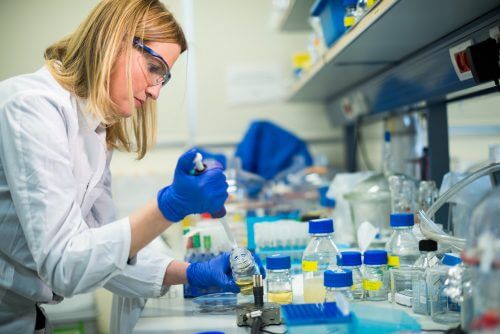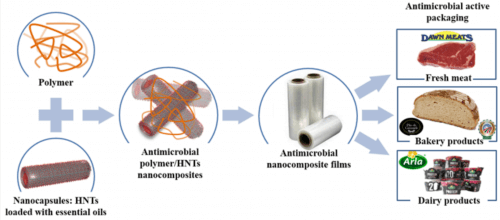The European Union will invest 7.7 million euros in a consortium led by Prof. Esti Segal from the Faculty of Biotechnology and Food Engineering at the Technion, which will develop active, antimicrobial food packaging that will extend the shelf life of food.

7.7 million euros - this is the amount that the European Union invests in the NanoPack consortium, headed by Prof. Esti Segal from the Faculty of Biotechnology and Food Engineering at the Technion. The goal of the consortium: development of active, antimicrobial food packaging that will extend the shelf life of the food. The innovative packaging is based on clay nanotubes (Halloysite Nanotubes) that release natural antimicrobial substances. It will prevent the development of foodborne diseases and epidemics, reduce the need for preservatives and reduce food loss.
Prof. Segal and her group have developed technologies in recent years that allow natural extracts of plants to be combined with plastic materials. These extracts are known for their ability to inhibit growth and even kill bacteria, mold and fungi. The plastic bags that will be developed as part of the consortium will release the extracts in a controlled manner into the packaging space and prevent the development of microorganisms that cause food spoilage. This way you can safely extend the shelf life of a variety of food products and reduce the use of preservatives.

The EU's announcement of the support for the consortium came close to the publication of The national food loss report in Israel which presents a bleak picture. Every year, food weighing 2.4 million tons and worth 19.5 billion NIS is lost in Israel. This is a third of the total food produced - a rate similar in scope to orders of magnitude in Europe and the US, where far-reaching goals have been set to reduce the phenomenon by 2030. According to Prof. Segal, "the success of the project may provide a local and global solution and significantly reduce the amount of food thrown into the garbage in the world, which stands Currently on 1.3 billion tons per year, thus reducing the damage to the environment and the economic damage."
The consortium, which will be officially inaugurated at the end of the month, is being established as part of the European Union's HORIZON 2020 program and 18 research institutions and leading industrial companies from Belgium, Austria, Norway, Spain, Israel, Ireland, Denmark, Portugal, France, Germany and the Netherlands are partners in it.
The European Union will support the new consortium for three years while addressing the scientific, technological, economic, safety and regulatory challenges. As part of the consortium, experimental production lines (pilot lines) will be set up in an industrial environment, testing all stages of packaging development and production with the aim of bringing them to commercialization.

5 תגובות
Throwing away food as a result of tithing is a scandal - there should be a law against it. - A religious person who wants a tither to enrich himself what he buys.
Whoever pays for it will buy everything and throw ten percent at his expense.
On the other hand, the policy of the agricultural market, the injection of the so-called "Berra" which is a product that is good for eating, is just not pretty enough. It's also a scandal.
And also an injection of produce to maintain prices and so on.
There should be a law that everything that grows on the tree must reach the consumer one way or another and that the consumer himself chooses whether to tithe or throw away the barra.
Every villa has at least three fruit trees, and in the urban area of the cities there are zero fruit trees
And even if you find clementine trees are the bitter kind, it seems like it's really on purpose.
ארי
Noah already had a discussion about it. You try to put hate everywhere and spread lies.
The amount of the tithe is symbolic and has no meaning. In which we will say that the amount of produce that is destroyed by the farmers to maintain the quotas and only to maintain a high price in the market. This amount is much larger.
First of all, stop destroying goods and allow buying the product that is not type A (all surveys show that most consumers will be happy to buy with a discount on vegetables and fruits that are usually only damaged in their external form.)
or better. First switch to a vegetarian diet, believe me the difference in food waste will be much greater.
Just cheap demagoguery. What did two cows throw at you from a whole field? Oh no!
Is the weight of the food that the farmers are forced to put as a tithe on each and every surface of vegetables sent to the market taken into account in the calculation of the food that is lost?
This tithe goes to the garbage can of the marlog and from there to the central garbage pit. This is a huge loss of vegetables/food and this is in order to please the religious overseer who from time to time considers whether there is enough weight in the tithe. And if it is underweight according to his calculation, then he takes and completes the missing weight from the highest quality produce.
This is what I call waste and loss of food for heaven's sake.
Only no one has tested whether the nanotubes are cancerous. Remember that the dimensions are similar to the dimensions of the asbestos.